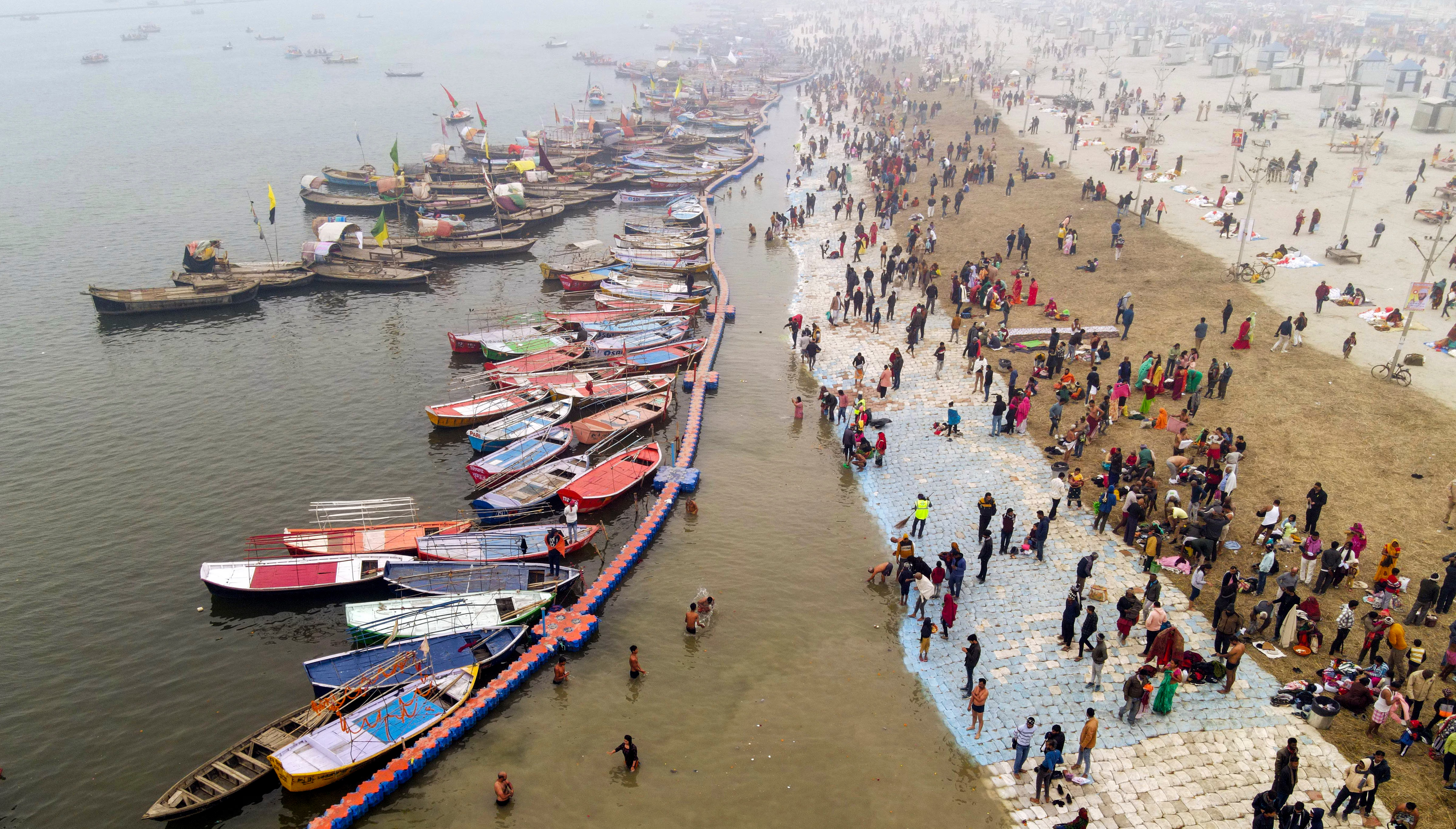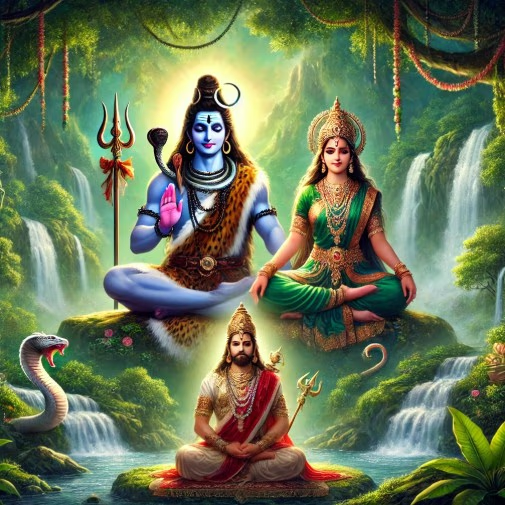Recognized globally due to the Mahakumbh-2025, Prayagraj has for centuries been a land of Vedic and mythological heritage. Nestled in the Ganga-Yamuna Doab, it held as much significance during the Mughal and British eras as it did in ancient narratives. Formerly known as Allahabad, its ancient name was Prayag, and it has been referred to as 'Ilavas' in the Puranas.
In ancient times, Prayag was a large forest region along the confluence of the Ganga and Yamuna. Known as Prayagvan, it was far from urban civilization and served as an ideal retreat for sages. Author Govind Kumar Saxena describes Prayag as a land of deep meditation, home to eighty-eight thousand hermitages. The Prayag area was considered to stretch for 'twenty kos', encompassing regions like Panasa (Leaf Hermitage) beyond Yamuna to Durvasa's hermitage across the Ganges.

Source: aajtak
Ilavanshi Rulers of the Sangam Shores
In ancient eras, the Sangam region was ruled by the 'Ilavanshi' kings, hence it was known as Ilavas. According to mythological accounts, the history of India's royal lineages begins with Ayodhya's solar dynasty king 'Ikshvaku'. Historians believe the contemporaneous 'Ail' tribe moved from the central Himalayas via Almora to Prayag. Their king 'Ila' incorporated Pratishthanpur (Jhusi) into his kingdom. Soon, except for Ayodhya, Videha, and Vaishali, Ilavanshi emperors ruled throughout North India and Southeast to Vidarbha.
Who was King Ail?
King Ail's name prominently appears in mythologies, also known as Ila. After him, his son 'Pururava' ascended the throne. Pururava's son Ayu is said to have expanded his kingdom to China's Yunan province. Ayu's great-grandson, Emperor 'Yayati', was renowned as one of six great emperors in mythological times. Bharata, after whom our country is named, was Yayati's descendant. King Bharata brought sage Bharadwaja from Kashi to Ilavas and organized numerous sacrificial rituals with his help.
Mentioned in Mythological Tales
King Ela's tale is fascinating as it relates to how the Sangam area gained the urban moniker 'Ilavas'. Somewhere called Ilavarta, King Ela was a Solar dynasty king, but also an ancestor of the Lunar dynasty kings. How? The answer lies within mythological stories.
Elaborately described in texts like the Vishnu Purana and Bhagavata Purana, two regal lineages were dominant: the Solar dynasty of the Sun god, and the Lunar dynasty. Notable Solar lineage rulers included Ikshvaku, Sagara, Raghu, Dasharatha, and Lord Rama. Conversely, the Lunar dynasty saw kings such as Pururava, Ayu, Yayati, Shantanu, and Bhishma. Even Lord Krishna belonged to a Lunar dynasty branch.
The Intriguing Origin of the Lunar Dynasty
The intriguing origin of the Lunar dynasty involves a captivating story. At Goddess Parvati's prompting, Lord Shiva created a beautiful, mystical forest named 'Kamyaka'. This forest appears in the Mahabharata, where the Pandavas spent time during their exile. Enchanted, Goddess Parvati cursed that anyone entering the forest against her will would become a woman. Afterward, Parvati and Shiva retreated to the forest for solitude.

Source: aajtak
King Ail Enters the Enigmatic Kamyaka Forest
Meanwhile, King Ail, son of Vivasvat Manu, ventured deep into the woods while pursuing an enemy king. Though the rival eluded him, Ail entered Shiva-Parvati's mystical Kamyaka forest by mistake. There, he fell under Parvati's curse, transforming into a woman. Distressed yet astounded, Ail repeatedly apologized, explaining his unintentional mistake, but the curse was irreversible. Parvati, however, limited the duration of the curse to just two years.
The Transformation: Ail to Ila
During this period, Ail became known as Ila. In his female form, he married Buddha, the moon god's son, and their son Pururava founded the Lunar dynasty. Recognized as a formidable king, Pururava married the celestial nymph Urvashi. Their legendary story unfolded in Prayag. Author Dr. Rajendra Tripathi, in his book 'Prayagraj Kumbh Katha', narrates that Pururava reigned over Pratishthanpur (present-day Jhusi) at the Sangam's convergence. This city later became the royal center for Nahusha, Yayati, Puru, Dushyanta, and Bharata. The connection to these Lunar kings or 'Ilavanshi' rulers popularized the name 'Ilavas' for the region.




